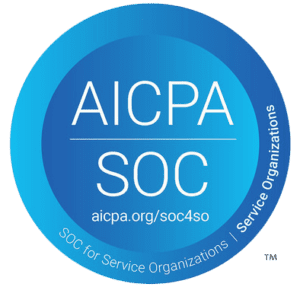As a financial advisor, your technology is the backbone of your business. It allows you to complete the day-to-day tasks that help your clients’ financial goals become a reality. But in today’s ever-changing technology landscape, making the right technology decisions for your firm isn’t easy.
Due to the wide range of tools modern advisors need to run their operations, you’re faced with the decision of selecting an expansive/legacy all-in-one solution, or building your own technology stack of hand-selected tools. There are pros and cons to both technology approaches, which we’ll cover in today’s post as well as discuss why we recommend the approach we take at Bridge.
Pros and Cons of All-in-One Solution
Pros of All-in-One Solution
One-Stop-Shop
At first pass, the convenience of a single vendor solution draws many advisors to all-in-one tools. If you opt for an all-in-one solution, you will have just one platform to learn how to navigate. Additionally, you will only have one vendor to manage. Many advisors enjoy the single access point and perceived data centralization that comes with an all-in-one platform.
Cons of All-in-One Solution
Weaker Tools
The reality when it comes to all-in-one solutions is they often tend to take a “quantity over quality” approach. That is, their goal is to provide the largest array of tools under one roof. However, as a result of that goal, it’s challenging for all-in-one vendors to focus deeply on innovation or optimizing functionality and efficiency of the user experience within each tool.
Additionally, many all-in-one solutions are the result of multiple distinct tools being acquired over many years, leading to Franken-tech results. The connectivity and “under the hood” integration quality of these acquisitions may be far less than initial appearances. While the overall number of features may be plentiful, it’s not uncommon to find out that each individual tool’s functionality is no longer robust enough to support your preferred workflow and management styles.
Higher Cost
All-in-ones tend to charge a steep premium for access to their entire suite. Because they provide a one-stop-shop with a large array of features, these vendors typically feel they can demand larger contracts, often with extensive terms. In this case, you end up paying a premium, often for many tools and features you likely don’t need or won’t use.
Limited flexibility
Once your firm has transitioned to an all-in-one solution, you give up much of your bargaining power. The all-in-one provider has all of your data and likely had you sign a lengthy contract. This makes it challenging for your firm to maintain easy access to ongoing market innovation as the all-in-one provider may not be incentivized to integrate your data flow to new tools they perceive as potential competitors. The market will continue to innovate but your firm may lose access to new tools or solutions that may be better fits for your needs. Beyond these concerns, once you’re locked into an all-in-platform, if you do later decide you need more robust functionality within a specific tool, it can be difficult to implement. Because all-in-one platforms do not prioritize data integrations with other providers, it can be extremely difficult to layer in other platforms down the line.
Pros and Cons of Integrated Tech Stack
Pros of Integrated Tech Stack
Best-in-Class Tools
When you go the route of building a technology stack of best-in-class tools, you can be assured each provider has invested significant resources into the depth and functionality of their platform. Dedicated tools mean that you can leverage best-in-class technology to power your preferred workflows. These providers offer more robust solutions that go beyond the basics provided by all-in-ones and a focus on innovating in their functional expertise.
Better price-to-value
Best-in-Class providers don’t charge the steep mark-up fees that all-in-one providers do. Because you’re only paying for tools you want and know you’ll use, you end up paying much less overall. Cutting the “fluff” included by many all-in-ones means a better bottom line for your firm. Oftentimes even adding up each specific technology partner you may need, the total cost is still significantly more affordable than a marked-up all-in-one platform.
Better integrations
Best-in-class providers offer a superior integration experience for your firm. Because their tools are designed to be a complementary part of an overall tech stack, they offer better data and user-interface integrations. Many best-in-class providers will go above and beyond for the advisors they work with, ensuring all integrations are seamlessly connected.
Cons of Integrated Tech Stack
Upfront selection time
Building an integrated stack of tools is inherently more complicated than working with an all-in-one provider. During the process, you’ll need to research and select several providers, as opposed to one. Additionally, once you pick your tools, you’ll then have to continue to coordinate with several vendors. Some advisors are also put-off by the idea of managing multiple systems and learning how to navigate those tools effectively. On the other hand, in many cases, you would have invested that same amount of time in exploring the entire functionality of an all-in-one platform and learning its tools anyway.
What’s the right thing to do as an advisor?
As an advisor, you know your firm and workflows best. You will have to weigh the pros and cons to determine if your interest lies in a one-stop-shop (that comes at a markup), or the quality and innovation that comes with an integrated set of dedicated solutions. It’s important to note that although many advisors are concerned about data and integration challenges that come with building a stack of best-in-class tools, those fears are not always warranted, and oftentimes all-in-one legacy solutions’ are less integrated than one would expect on first glance. Some providers (such as Bridge) have developed deep data integrations that allow seamless workflows across platforms. You can enjoy a best-in-class solution and a commitment to innovation, while maintaining the peace of mind that your data is up-to-date, secure, and yours to keep.
What is Bridge doing about this?
This dilemma is exactly why Bridge built an open, integration-first portfolio management platform that syncs with all of the best advisor technology solutions on the market. Bridge acts as the portfolio accounting engine, and thus data source for many advisors by aggregating and reconciling custodial account data each day. Our API capabilities open up the opportunity for other technology solutions to leverage Bridge as their centralized data source and provide the advisor with complete, synchronous data across multiple tools without the risk and time associated with manual data entry.
For advisors that want to “hit the easy button” and have the convenience of a one-stop-shop without sacrificing the benefits of specialization, Bridge has an answer. In partnership with AdvisorPeak and SmartRIA, Bridge has delivered a fully-integrated, best-in-class solution to cover all the key areas your firm needs. The best part of this integrated solution is that you get all of the benefits of building a custom technology stack, with the peace of mind that all of your data stays in sync between systems for a single, affordable monthly rate. As always, for advisors who value freedom and flexibility above all else, Bridge remains a partner in navigating and integrating with other specialized solutions.


